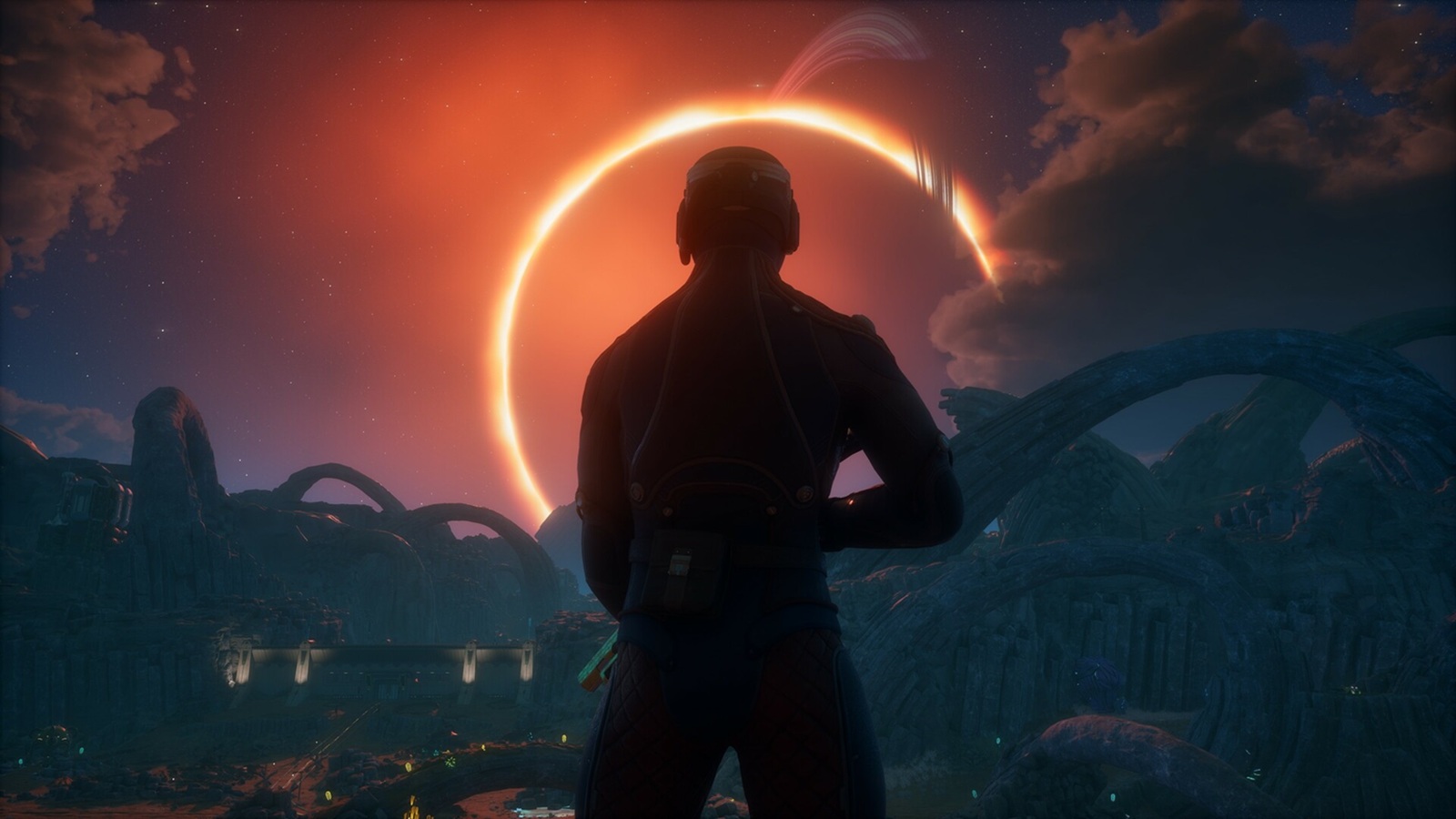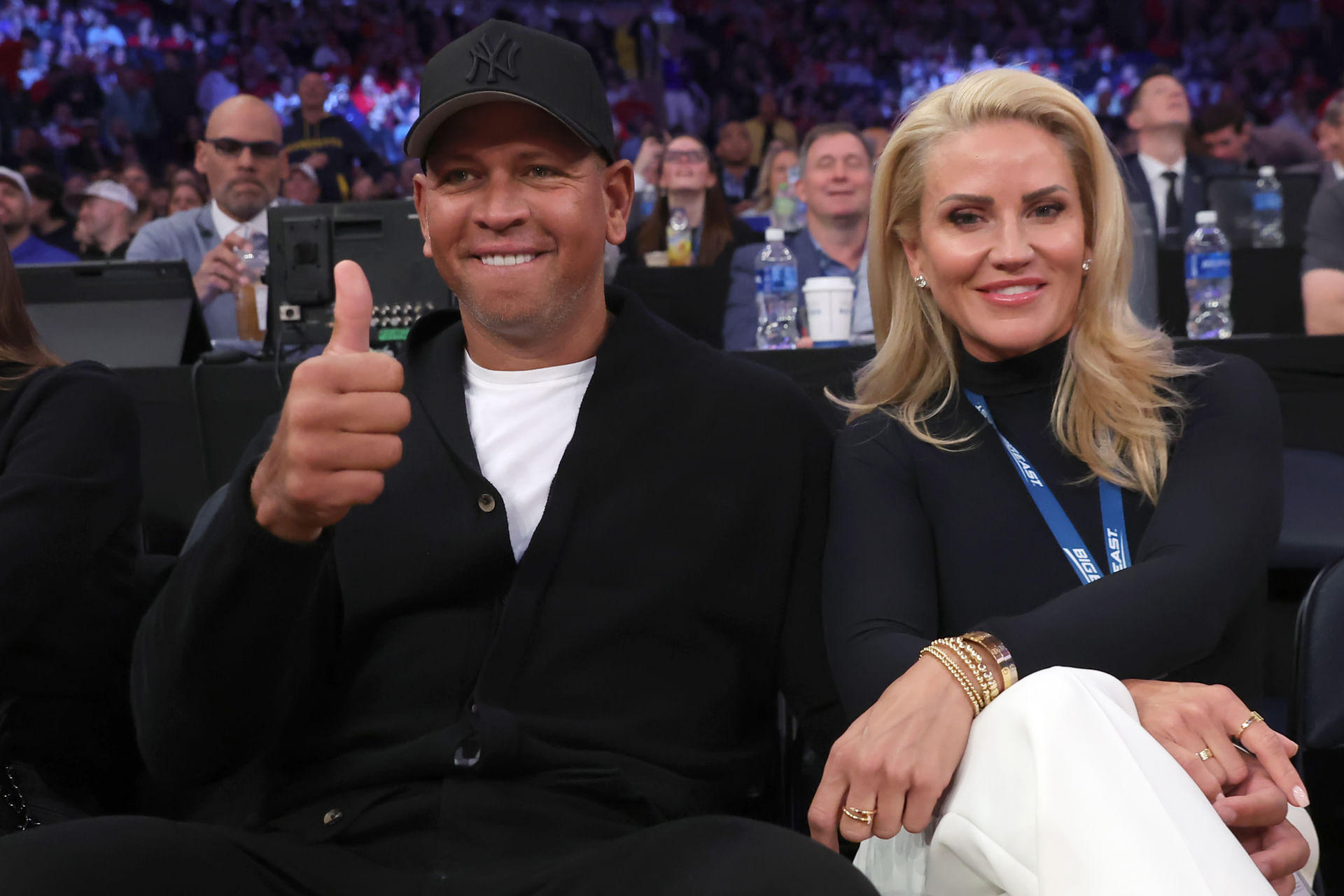Obsidian Entertainment has built a distinctive mood with *The Outer Worlds* series—a tone that positions corporations, executive manipulation, and rampant consumerism as a plague haunting humanity well into our future in space, all delivered with a dark comedic flair. This vibe carries on into *The Outer Worlds 2*, where those nasty old mega-corporations are at it again. But even if you’re over the joke, *The Outer Worlds 2* does a lot more than just keep telling it. It offers a rewarding and varied space adventure built on an upgraded foundation of solid gunplay, enjoyable characters, and unique opportunities across different playstyles.
### Adventures of an Earth Directorate Anybody
*The Outer Worlds 2* picks up in another corner of Obsidian’s sci-fi future universe known as Arcadia, inhabited by the Protectorate faction. This faction controls most of the Skip Drives powering hyperspace travel across galaxies. Players take on the role of an Earth Directorate agent—representing the best interests and justice of our home planet, where applicable.
Earth doesn’t want the Protectorate to have a monopoly on Skip Drives, so it sends a small team to steal the research behind this technology. As you might expect, things go wrong. One of your agents goes rogue and opens a black-hole-like rift that swallows the station you’re trying to heist, flings you into space in an escape pod, and sets Arcadia on a timed path to destruction, as the rift threatens to expand and consume the entire system.
The real quest of *The Outer Worlds 2* begins 10 years later with your body recovered and sent on a new mission: track down and kill the rogue agent.
Along the way, you learn that the corporations from the first game—Spacer’s Choice and Auntie Cleo’s—have merged. Auntie Cleo’s absorbed Spacer’s Choice and rebranded as Auntie’s Choice. This growth has given Auntie the resources to barge into Arcadia and start a war with the Protectorate for its Skip Drive technology.
Amid your hunt for the rogue agent threatening to destroy the system, you must navigate the unfolding Protectorate/corporate war as well as other factions active in the periphery.
### A Compelling Story with Complex Factions
I really like *The Outer Worlds 2*’s story. The first game leaned heavily into capitalist and corporate satire, with several companies serving as the backdrop and moral compass—though all were flawed in some way. With Auntie’s Choice and the Protectorate in the sequel, the tone feels different.
Both factions are bad and grossly undervalue individual rights. Auntie’s Choice focuses on consumerism, while the Protectorate is essentially a fascist oligarchy. Both are easy to hate, but many individuals within these groups feel genuinely trapped—brainwashed weirdos trying to earn approval, climb the ranks, and simply survive. This adds layers to their characters and makes it easier to empathize or at least understand their motivations.
The presence of additional factions operating alongside the main ones provides real causes to root for as you navigate the game’s stories and quests.
The major factions even have their own radio stations broadcasting unique music and reacting dynamically to your actions throughout the game, adding to the immersive experience.
### Quite a Ride Ahead of Us
Few things showcase the mood of opposing sides more vividly than the game’s companions. There are six companions this time, each representing a major faction you’ll interact with—whether friend or foe.
You might think having an Auntie’s Choice soldier like Inez paired with a Protectorate Arbiter like Tristan would be annoying. Yet each character has enough depth that teaming them up is rewarding, especially to see how they react to your decisions—and to each other.
I particularly enjoyed squading up with those two because they would be enemies elsewhere. Making them work together leads to interesting moments both during and outside active quests. All of the companions are well worth exploring, offering diverse perspectives and enriching the story.
These companions and their factions take you across a very diverse collection of locations. *The Outer Worlds 2* expands significantly on its predecessor by offering much more space to explore and far more content within.
The game once again features a variety of planets, stations, and hotspots that you visit as the story progresses. Several worlds have expansive maps. You start on Paradise Island, which serves as an introduction, but after unraveling its secrets, the game throws you into an even larger map to explore as the adventure continues.
The environments are gorgeous and packed full of secrets and side quests, making exploration a consistently rewarding experience. Overall, it feels like a more enticing and expansive collection of maps compared to the first game.
### Some Repetitions and Stumbles
That said, *The Outer Worlds 2* does lean on a few things a bit too much. If you were bored by the corporate satire in the first game, don’t expect that to lighten up here. The corporate jokes and commentary remain front and center.
Additionally, planets often utilize many of the same enemy types repeatedly. There’s a good variety of threats overall, but on individual planets, you usually encounter only one or two kinds of creatures, with little variation in their behavior.
Encountering a Mantisaur for the first time is novel; running into dozens of them by the fifteenth encounter is less so.
### Familiar Yet Improved RPG Systems
The RPG systems from the original *The Outer Worlds* have returned intact and been improved for the sequel. The character progression and choices are fascinating and multifaceted.
At the start, you pick two skill specialties such as Guns, Lockpicking, Melee, Speech, or Hacking. You can also invest points into additional “minor” skills to make your character more well-rounded.
For example, I chose Observation, Lockpicking, Guns, and Sneaking, combined with the Lucky trait (which provided random skill checks), and an Ex-Convict background (which sometimes unlocked unique dialogue options). This made my character fun to play in combat, stealth, and social situations, though I also missed out on many options I was regularly teased with.
For instance: a medical check? I could pass. But opening a broken door requiring Brawny? I lacked that skill. Unlike many RPGs, your companions can’t fill in these skill gaps, so certain checks simply aren’t available to you—left for a future playthrough.
The game also remembers your decisions exceptionally well, better than most in this genre. Rather than just a few key choices shaping your path, many of your actions ripple through the game’s narrative.
Characters often reference earlier choices in relevant conversations, painting a detailed picture of your past decisions. It’s impressive how many seemingly small or large choices continue mattering as you progress.
### Fun Combat and Tactical Play
The core gameplay facets remain enjoyable. I liked the gunplay and weapon customization in *The Outer Worlds 2*. Discovering new weapons and modding them to fit my playstyle became a regular and satisfying loop.
There are unique, special weapons too—like the Death Sentence rifle, which places a countdown on an enemy when you land a weak-point shot, causing additional heavy damage when the timer hits zero.
The Tactical Time Dilation system returns from the first game, letting you slow down time and pick out easier shots—a feature that enhances the combat experience significantly.
New gadgets also expand gameplay options. You can deploy a temporary shield, see enemies and electronics through walls, or even melt corpses to avoid leaving evidence. As a stealthy player, melting enemies into unrecognizable green goop was particularly satisfying.
### Jank and Bugs: The Ugly Side
Despite many improvements, *The Outer Worlds 2* still suffers from typical open-world quirks.
Stealth can feel inconsistent, with scripted events that alert all nearby enemies regardless of whether you’re hidden or not. Enemies within a wide radius often become aware when just one spots you, which can become frustrating.
NPC AI can be silly—enemies sometimes run nonsensically between covers or get stuck due to poor pathfinding. Even your companions often get caught in these moments, leading to accidental deaths or other odd behavior.
I also encountered some minor bugs—like a companion’s dialogue marker which bugged and never disappeared. While small individually, these bugs add up and remind players that *The Outer Worlds 2* is far from perfect.
### Come Fly With Me
Despite a few qualms, *The Outer Worlds 2* delivers another solid sci-fi RPG experience from Obsidian Entertainment. It probably won’t convert players tired of its corporate satire, but fans of the first game will find plenty to enjoy here.
The factional tug-of-war at the heart of the game is fun to explore, and the companions you recruit make the journey more engaging and complex.
More than that, this is a big, exciting adventure you won’t be able to explore fully in a single playthrough. Whether you dive in fresh or return for another run down different paths, *The Outer Worlds 2* offers a rewarding and memorable gaming experience.
—
*This review is based on a PlayStation 5 digital copy supplied by the publisher. The Outer Worlds 2 launches on October 29, 2025, for PS5, Xbox Series X/S, and PC.*
https://www.shacknews.com/article/146533/the-outer-worlds-2-review-score



